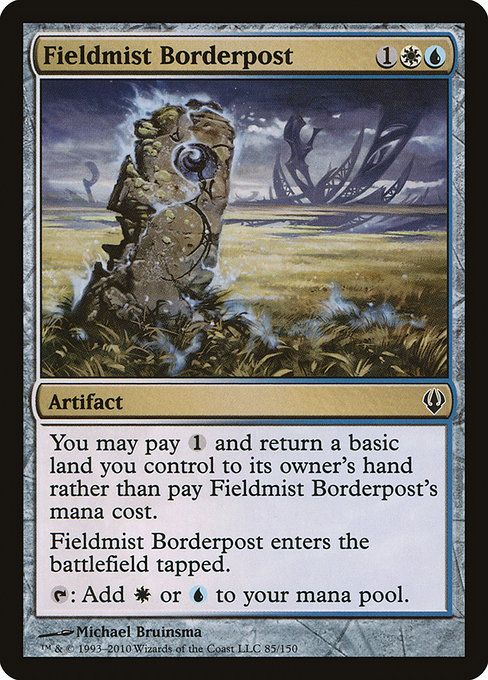Are you a Quiet Speculation member?
If not, now is a perfect time to join up! Our powerful tools, breaking-news analysis, and exclusive Discord channel will make sure you stay up to date and ahead of the curve.
I stumbled into a speculation hype trap during Grand Prix Kansas City in July 2013. Todd Anderson was blitzing his way into the top tables with a nasty Disciple of Griselbrand and Goryo's Vengeance reanimator strategy. It was #griselbanned meets Modern and, as a combo player, I was in love.
This wasn’t the first time I’d seen Disciple of Griselbrand Reanimator in Modern (it was all over MTGO in the months leading up to the event). It also wasn’t the most stunning performance---Todd finished in the Top 16 and zero other players were on the deck.
Nevertheless, I spent more money on more copies of the deck's core cards than I care to admit.
In the following months, I earned a modest profit on these investments, but the deck never took off. My resale efforts, especially in hours logged, were barely worth the returns. I had fallen into the hype trap.
I’ve come to define a “hype trap” as a speculation decision driven by excitement and flashy performances, which leads to negligible profit margins, breaking even, or an outright loss in money.
Yes, hype traps can turn a profit, but you’re often investing so much internet time, eBay photography, postage, and other effort into the turnaround that it’s barely worth it in the end.
Because Modern is such an open format with frequent rogue finishers, we’ll find a hype trap in almost every major tournament. The 24/7 Magic content mill won’t allow us to ignore these traps, and I’d be lying if I said I’ve never vouched for potential hype trap cards in my own articles. We finance writers just want to help and would rather cast a wider net than a narrower one.
There’s also significant incentive, both financially and in regards to your reputation, to be at the cutting edge of a breakout investment target. This often translates into milking potential hype traps. Even if you avoid Magic financial advice, it’s hard to resist filling your TCGPlayer cart after a techy deck breaks into a Top 8.
Today, I want to give readers a few tips on navigating hype traps. We’ll look at two cards that illustrate some guiding principles for when to get in, when to get out, and when to stay away.
You can’t get ahead in Magic finance without taking risks, and hopefully these tips will help you distinguish the good risks from the hyped pitfalls.
The Short-Term Spike: Slivers
Modern tends to reward linear decks. This is a function of a card pool with a huge list of non-interactive synergies, but one that lacks the strong generic answers available in Legacy. Control and midrange often can’t answer every single linear deck that comes their way, which means even the roguest Tier 5 deck can sneak into major Top 8's.
That’s exactly what happened during Star City Games’ Cincinnati Open when Adam Bowman took his Slivers list to an 8th Place finish.
Bowman put up a great showing en route to his Top 8 performance, and Slivers turned out to be a decent choice in a metagame heavily geared towards spot removal.
The markets reacted instantly. Sliver staples shot up overnight, especially the older slivers from Time Spiral block (e.g. Sinew Sliver). It wasn’t the first time we’d seen slivers in action, but it was their biggest victory to-date and the subsequent price spikes reflected that fact.
Nowhere was this price explosion more apparent than in Sedge Sliver.
The Sedge Troll homage jumped from a TCG median of about $2.50 to over $15.00 in about 24 hours. The TCG high was even crazier, leaping from the $4.50 range to $40-$50.
No matter which price jump you look at, that’s an insane 600%-1000% increase for a deck that hadn’t seen a large tournament Top 8 since May 2015 (Bryan Dubois in 5th at an SCG Premier IQ in Dallas-Fort Worth).
Since September, Sedge Sliver has stabilized in the $9-$14 range, despite Bowman’s bid at Grand Prix Pittsburgh for another Top 8 (he finished at 131st). Wizards still hyped the deck in a spotlight, although this time the price held stable.
The only time you would have turned a profit on Sedge Sliver is if you had bought that baby in the first few hours of the buyout hype. Late to the party? The Sedge was already a $10 card on the basis of a single 8th place finish. It doesn’t get much more overvalued than that.
Navigating the Hype Trap
There was only one smart way to invest in Sedge Sliver: buying it intentionally as a short-term turnaround.
You had to buy in the first few hours, resist the urge to keep buying while everyone else was losing their minds, and then get out as soon as possible. Anything else wouldn’t have been worth the effort or, worse, would have lost you money.
Many Slivers investors bought in on the hype of Bowman’s finish, but they gave little thought to Slivers’ context in Modern as a format. Although the deck isn’t bad in Modern, it’s not nearly as good as competing options.
Want to play fast, creature-based aggro? Gruul Zoo and Nacatl Burn are far more explosive than Slivers. Interested in Collected Company aggression? Naya Company is really where you want to be. Utility creatures? That’s Hatebears or Death and Taxes. Synergy-based creatures? It doesn’t get any better than Merfolk or, depending on how you define the strategy, good old Affinity.
No matter how you shake it out, these Tier 1, 2, and 3 decks don’t leave any room for Slivers. That’s bad news for anyone who spent $40 on a Sedge Sliver playset hoping to play the long game. But it’s irrelevant news if you were just buying to sell.
Whenever buying into a potential hype trap, it is imperative that you consider the card and its deck in the context of the Modern metagame. Slivers is a perfect example of a deck that can’t convert its hype into a real metagame presence.
Everyone is looking for the next breakout deck, and a careful analysis of context can help you decide whether you’re in the money or getting trapped. I'll always point to my own Modern Nexus metagame breakdowns as a great source of information on the format, but there are plenty of other places you can get insight as well.
The Total Bust: Restore Balance
If you’re playing the Magic finance game, you’ve probably busted on a major speculation at least once. This typically happens during spoiler seasons. Laboratory Maniac gets revealed? Say goodbye to the internet-wide Cityscape Leveler stock.
Speculations like this tend to raise card prices by no more than $.50-$1.00 in the long run, if you’re lucky. Even if you are, it often ends with you up fifty Cityscape Levelers sitting in your trade binder and no way to unload them at a buck a piece.
You also see this in Modern, particularly if you speculate around the Top 8 listings for random SCG IQs and other midsize regional tournaments. Restore Balance is a prime example.
Back in October 2015, Albert Vizcarra took 6th at an SCG Premier IQ in Atlanta. His Restore Balance list has been around in Modern for ages: Peter Vieren brought his own take to the format’s inaugural Pro Tour Philadelphia in 2011. We’ve also seen the list crop up in MTGO Dailies and local tournaments over the intervening years.
Of course, when Vizcarra’s build made Top 8 in this current era of hypervigilant Modern speculation, the market response was much more dramatic than in Vieren’s years.
I saw a number of Modern players, both on content websites and in forums, ask or advise about cards like these. No one wants to be at the back of the line if Restore Balance is the breakout combo deck of the year, which means aggressively purchasing staples when the deck rears its head.
Unfortunately, if you were one of the Restore Balance investors (either now or in Vieren’s time), you’re going to be sitting on these purchases for a long time before you see any significant change.
Both the TCG mids and even the highs were largely unaffected by Vizcarra’s finish, even if some people went nuts about the prospect of a new Living End-style deck. Although stale stocks did diminish in the wake of the Atlanta Premier IQ, their actual prices held stable.
This itself is an early indicator that a speculation has already busted in the short term---double-trouble when the stable median is right around the pre-tournament median. This suggests long-term gains will be slow to come.
Restore Balance is the kind of card you can’t even turn a short-term profit on. The Modern context is working too heavily against it, and cards like this almost always become major busts.
Navigating the Hype Trap
Modern decks will come and go, but weird decks in Top 8's are eternal. As a Modern consumer, you need to separate the weird finishes that might lead to short-term spikes (see Slivers) to the weird finishes that are too far off the beaten trail.
A weird linear deck like "Extra Turns" (or whatever Wizards wants to call it) will come up at a Grand Prix every blue moon. This doesn't make it a Modern regular. It doesn't even make it a good deck. It just means there are lots of decks in Modern and some untiered renegades can slip through the cracks.
When you're looking at a "breakout" deck that no one but you has noticed, ask yourself why this deck succeeded. Did it win because it's just one of many rogue decks that tend to sneak into Top 8's? Or is it really the next big thing?
If you think it's the latter, you'll need to do a careful analysis of format context. It can even be a quick review right as you're dumping copies into your TCGPlayer cart! You'll still need to do it.
Is this deck better than URx Twin? Infect? Ad Nauseam? Scapeshift? Decks like these are the true iconic combo decks of Modern. If your speculation target doesn't stack up favorably against them, you're buying into a hype trap that is unlikely to gain more than a dollar.
You'll also need to conduct a more qualitative analysis of the format and see how much interest surrounds the deck. Slivers have the honor of being a tribe players and fans have been trying to build competitively for years. It just takes a single finish to restore hope.
Something weirder like Restore Balance? People are just going to stick with Living End, because there's no real demand for a competitive Restore Balance deck in the format.
These two points of comparison can help you steer clear of hype traps that won't even enjoy short-term gain.
Future Hype Traps in Modern
It's hard to make any money in Magic if you aren't willing to take risks. At a certain point, you'll come across these Modern hype traps and will need to decide whether to dive in or keep away.
The metagame context clues I've discussed above can help you identify the short-term gainers and the all-around busts, which is the key to making big bucks in Modern speculation.
What are some other hype traps you have come across? Any cards you want me and other readers to weigh in on? Or other advice you want to see about navigating the perilous waters of Modern hype?
Let me know in the comments, and I hope everyone enjoyed a great Thanksgiving week.

































Excellent article and breakdown of previous hype traps.